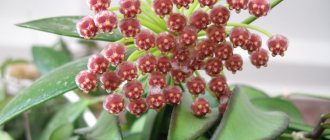Every housewife dreams of seeing her garden plot blooming and fragrant. For this, a lot of effort and time is spent, a combination of different plants is selected, and flower beds are erected. But it is impossible to imagine a single flower bed without a beautiful and delicate eustoma flower. In addition to growing in open ground, this plant looks great in a flower pot on the windowsill.
If the reader has never heard or seen this beautiful flower, then the editors of the Agronom.guru portal will help you understand the question of how to properly plant perennial eustoma and tell you about further care. The article will also present photos of buds and flowers that amaze with their beauty.
An ideal solution for decorating a personal plot
Types of Irish rose eustoma - brief botanical information
Perennial eustoma is a delicate and luxurious flower that came to our country from Central and South America and immediately won the hearts of many gardeners. In nature, only blue and purple flowers exist, but thanks to the efforts of breeders, varieties of various shapes and colors have been developed.
The flower is original not only for its beauty, but also for its various names. In each country, the plant has its own name: in Ireland - Irish rose, in Japan - Japanese, in France - French love rose, and in Ireland - Irish rose or Texas bluebell. Eustoma is also called lisianthus, which means “bitter flower” in Latin. The flower received its second name for a reason, since it belongs to the Gentian family and contains a large amount of gentianin, genceopecrin and genteamarin. All these poetic names are true and show the love of many countries for this amazing and unusual perennial.
Lisianthus and eustoma are the same plant
Introduction
There are several leading companies in the world engaged in eustoma breeding. In the Russian Federation, mostly seeds from these producers are sold, but packaged by local companies.
Because of this, confusion often arises in the names of varieties. Therefore, we will present international names presented on the official websites of breeders. In most cases, varieties are named after a color, and this color is included in several collections.
Eustoma varieties are divided into five groups depending on the timing of flowering.
Group “0” – very early, “1” – early, “2” – middle, “3” – late, “4” – very late. Some manufacturers distinguish four groups, without the “super early” one.
Lisianthus varieties are most often bred from the species Eustoma Russellianus (Russell), formerly called Grandiflorum or Eustoma large-flowered.
Photo of a rose-like eustoma flower in a garden and bouquet
Irish rose can be grown at home on the windowsill and in the garden. This plant looks great as a cut flower because of its beautiful flowers, which resemble half-opened silky roses. Flowers can stand in water for a long time without losing their beauty.
Photo of flowers in the garden
What eustoma looks like in bouquets, photo
Varieties of culture
Today, breeders have created a huge number of hybrids of various shapes and various colors. As a rule, manufacturers indicate the height of the plant on seed packets. When purchasing, you should also take into account the timing of flowering, since the period of bud formation varies greatly. Many of the resulting cultivars are combined into variety series.
For cutting, tall (about 1 meter) varieties are usually selected that look great in bouquets: “Echo”, “Aurora”, “Flamenco”, Heidi and many others.
Low-growing lisianthus will effectively replace fading plants in a flowerbed, for example, they will cover the exposed “legs” of lilies, and decorate the yellowing leaves of irises.
Compact bushes Mermaid (“The Little Mermaid” - in the photo), “Riddle”, “Loyalty” are also suitable for indoor growing
When choosing, they are guided primarily by the characteristics of the flowers, which can be simple, double or semi-double in shape, have the most varied colors of delicate silk petals: both single-color and variegated, two-color. The widest selection of F1 hybrids will help you create the desired color composition in your home interior and garden. The only thing that experts have not yet been able to achieve is to remove the climbing eustoma.
You can learn more about the botanical features of this herbaceous perennial and get acquainted with representatives of the most popular variety series in the article on our website.
Open ground or pot - where is it better to grow eustoma
Most gardeners wonder where it is better to grow perennial eustoma - in the garden or in the apartment? The answer is obvious that no matter where this flower grows, it will always delight its caring owner with its beautiful appearance. When grown in the garden, the plant will decorate any flower garden, will be an addition to rock gardens, and will also look beautiful in single plantings.
The most common is eustoma grandiflora.
Although eustoma is considered an annual plant when grown at home, it will, without any doubt, be one of your favorite indoor flowers, even though it must be grown from seeds every year. If you want to admire beautiful flowers on cold, short days, sow the seeds in mid-summer.
Eustoma prefers bright, diffused light
Types and varieties
There are 3 types of eustoma. The most popular is Eustoma grandiflora. These flowers can be grown in the garden, greenhouse, or at home . Very often this plant is grown commercially for cutting purposes.
Eustoma grandiflora grows up to 150 cm in height, has an erect and branched stem, along the entire length of which dark green oval leaves are formed. a dense inflorescence of many flowers is formed at the top. The corollas are large with soft and wavy petals. They differ in color and structure. Eustoma grandiflora has more than 60 ornamental varieties.
Tall varieties for gardening and cutting
Echo is the most popular varietal species grown for cutting into bouquets. The plant grows up to 60 cm in height, the flowers can be colored in any of 11 different shades.
The buds can be monochromatic or combine several shades, smoothly transitioning into one another.
Aurora - the plant grows up to 0.9-1.2 m in height, blooms with beautiful white, blue or pink semi-double flowers.
Flamenco is a decorative type of tree-like perennial eustoma. Grows up to 1.3 meters in height.
The plants are easy to care for and are characterized by lush flowering.
White Grandiflorum (Lisianthus grandiflorum) – This is one of the most impressive and luxurious species. The plant is most often used to make wedding bouquets, decorate interiors, and formal halls.
Dwarf varieties for home
Little Bell - In appearance it seems quite simple, especially when compared with other lush types of eustoma.
However, this is where its charm and touchingness lies. This flower can be grown in pots at home.
Florida Pink - This plant produces beautiful pink buds. This is a type of perennial eustoma, all the stems of which are abundantly covered with bright pink flowers.
Mermeid is a small plant for growing in pots indoors . The stem grows no more than 15 cm in height. The flowers are most often blue-violet, but there are pink and white representatives of this species.
Fidelity - this plant has a spiral-shaped peduncle that grows no more than 20 cm in height and many white simple corollas are formed on it.
In nature, there are more than 60 varieties of eustoma, they are all somewhat similar to each other, but at the same time they have their own characteristics and differ in appearance.
How to plant eustoma seedlings
Growing eustoma from seeds will not be difficult even for a novice gardener. You just need to know when and how to plant seeds for seedlings. Since properly grown seedlings are the key to a strong and healthy plant.
When to plant eustoma when growing from seeds
Eustoma is a slow-growing plant that, when grown from seeds, will bloom only at 25 weeks. Therefore, in order to see the long-awaited flowering, the seeds are sown in mid-December or early January. Many gardeners carry out this procedure in early November.
Since the seeds have good germination, they do not need stratification
How to sow eustoma seeds for seedlings at home: step-by-step instructions
| Photo | Action |
| In order for the plant to delight with its flowering for many years, it is necessary to approach the choice of seeds with all responsibility. You need to buy them only from trusted manufacturers and in yeasted form. | |
| Before sowing, prepare nutritious, well-drained soil. For good ventilation of the seedlings, it is better to sow the seed in shallow furrows. We place the seeds in spilled soil, dig them a little deeper and install a microgreenhouse to create favorable conditions for rapid germination. | |
| If you follow the sowing rules, the first seedlings will appear in 2.5 months. All this time, the plant is growing a powerful root system, which has a positive effect on the growth of an adult plant. | |
| Picking is carried out at the stage of 2-3 true leaves into prepared nutrient soil. | |
| We water the seedlings well and put them in a warm, sunny place. We carry out the first feeding after 5-7 days with calcium nitrate, diluted strictly according to the instructions. Next, careful care of the young plant is necessary. |
Eustoma: reproduction
Lisianthus propagates by seeds, dividing the bush, layering and cuttings. But if you ask any experienced gardener which method of propagation he prefers, the answer will be only seeds. No one has yet managed to propagate eustoma in other ways, because the plant suffers any damage to the root system quite painfully.
Growing from seeds
When to plant eustoma seeds? This is the question asked by any gardener who has set out to grow such an amazing flower. If you want lisianthus to bloom in July and August, then the seeds are planted in February or March. Some gardeners plant eustoma in December. It is difficult to say how justified such early sowing of seeds is, because in central Russia there can be frosts until June, but this flower is afraid of the cold and needs to be planted in the ground when the danger of frost has passed and the earth has warmed up. In addition, in December there is still little natural color and additional lighting will be required to successfully grow eustoma seedlings.
Favorable days for planting eustoma
Let's start with the fact that this crop begins to bloom 6-7 months after germination. Many gardeners rely on the lunar calendar when planting crops. In their opinion, sowing on the right days ensures vigorous germination and strong seedlings.
The following numbers are considered the best days for planting eustoma according to the lunar calendar:
- January – 2, 3, 5, 7, 26, 28.
- February – 1, 2, 3, 4, 5, 26-28.
- March – 1, 2, 3 5, 7, 8, 26, 27, 28.
These are the days of the moon's growth. You cannot sow eustoma seeds on the days of the New Moon and Full Moon, just as you cannot sow seeds on the waning Moon. These days, eustoma seedlings will not grow as they should and this will affect its decorativeness.
Favorable days according to the Lunar calendar, of course, have a positive effect on plant growth, but caring for the flower and creating favorable conditions is no less important.
When to plant eustoma seeds
To answer this question, you should take into account that from the moment a flower is planted until it blooms, 20-26 weeks pass, which is about 6 months. Because of this, in order to get eustoma blooming in July or August, the flower should be sown in January. If you sow at a later date, the Irish rose will bloom closer to autumn. If the autumn is warm, it will please the eye until the frosts. In this case, it makes no sense to plant the plant in pots, and it will continue to bloom at home.
Sowing eustoma seeds for seedlings
Eustoma seeds are sown in several ways:
- classic, that is, in seedling boxes, containers, cups;
- into peat tablets;
Sowing eustoma seeds in the classical way
With this planting method, eustoma is sown in various seedling containers. It is best to immediately sow the seeds in separate cups, this way you can skip the process of picking the plant.
Attention!!!
Containers for seedlings must have drainage holes.
The soil is disinfected before filling the containers. It can be calcined in the oven or sprinkled with Maxim or Fitosporin preparations.
For preventive purposes, in order to prevent the appearance of “black leg” and other fungal diseases, a thin layer of calcined river sand, vermiculite and coconut substrate should be applied over the soil.
Eustoma seeds are very small and have a low germination rate. Out of 100 seeds, only 60 germinate. The seeds are not buried, but scattered on top of the soil and lightly pressed to the ground. You can also use a toothpick to plant seeds. The crops are covered with glass or plastic film. Every day for 20-30 minutes you should remove the glass from the container and ventilate the crops. The seedlings should be regularly sprayed with Fitosporin. In order for the seeds to hatch without problems, the temperature in the room must be at least 20°C.
How long does it take for eustoma to sprout? The first shoots will appear in two weeks. After 1.5 months, 2-3 true leaves will appear on them and then it will be possible to pick the plant.
Eustoma in peat tablets
Growing lisianthus in peat tablets is easier than in regular soil. After all, there is no need to prepare or purchase soil. All nutrients and growth stimulants are already added to the tablets, so the seeds germinate well and grow without problems. If you plant one seed in each tablet, then such seedlings will not need to be picked. The substrate here is also sterile and does not require additional disinfection.
The only “minus” is that peat tablets dry out quite quickly and you need to constantly monitor their humidity. In order to avoid the tablets from drying out, you need to add sand, perlite or vermiculite to the bottom of the tray.
The size of the pallet is determined based on the number and height of peat tablets, taking into account their increase. After decomposing the seeds into tablets, the tray is covered with plastic wrap and placed in a warm place for germination.
Attention!!!
Peat tablets should be prepared for planting according to the instructions; as a rule, purchased tablets are placed in a container into which warm water is gradually added. That is, as soon as the tablets have absorbed all the water, a new one is added and so on until the products absorb water. The tablets increase in height by 5 times, but their width remains the original. The liquid that is not absorbed is drained.
Soil for eustoma seedlings
To grow healthy eustoma seedlings, you must choose the right soil. It should be loose, light, not retain water and provide the roots with good aeration. Irish rose loves slightly alkaline soil. The soil for eustoma should have an acidity level of ph-6-7. A ready-made mixture for violets (Saintpaulia) is ideal for growing the plant.
Important points
The substrate with seedlings should be moistened with warm water, to which you can add “Fitosporin”. This is done even if the soil has been disinfected in advance.
The seeds of eustoma are small and therefore are not buried in the soil, but rather laid out on the surface of the soil. In order for the seedlings to sprout more or less evenly, they need to be planted with a toothpick dipped in water. After the seeds are spread on the earthen surface, they are carefully sprayed with a sprayer. The crops are covered with film and placed in a warm place. When shoots appear, add additional light. To stimulate crop growth, Zircon is used.
On a note!!!
Eustoma seeds begin to germinate in approximately 10-14 days, sometimes the process of seed germination extends to one month.
The optimal temperature for seed germination is +21…+23°C; at night it can drop to 16°C. You should not keep the plant at temperatures above 26 °C, otherwise the leaf part will grow and the flowering will be less lush.
The seedlings are illuminated for 12-14 hours, and the lamp should be located at a distance of 15-20 cm from the plants. It is recommended to use LED or phytolamps, as an incandescent lamp can burn the seedlings.
Every day, film or glass is removed from the crops to ventilate the crops, and the condensation is wiped off with a rag.
When growing eustoma seedlings, the soil should be moist, but not over-moistened or over-dried. When watering, you only need to wet the soil; this should be done in such a way that water does not fall on the seedlings. You can use a syringe for watering. Be sure to treat the plant with a fungicide once a week. You can use Fitosporin or potassium permanganate.
When cotyledon leaves appear, the film is removed from the plants. This should be done gradually, increasing the ventilation time daily.
The seedlings grow slowly and some may think that there are problems with the seedlings. But in fact, flowers are expanding their root system and are in no hurry to grow.
Feeding eustoma seedlings
At all stages, eustoma must be treated with growth stimulants, such as Epin, Zircon, HB-101, etc. The plant is sprayed with these drugs. The products help the seeds to hatch and stimulate their growth.
Feeding eustoma
The eustoma is fed for the first time 5-7 days after picking. For feeding, take a solution of calcium nitrate. Nitrogen contained in the fertilizer will have a beneficial effect on plant growth, and calcium reduces soil acidity, stimulates growth and strengthens roots.
According to the instructions, calcium nitrate should be diluted in a bucket of water. This amount is too much. Therefore, it is best to prepare a stock solution. It must be used to prepare the solution. To make a mother solution, take 1 tbsp. l. calcium nitrate without a slide and diluted in 1 liter of water. The solution is poured into an opaque bottle and stored in a dark place. For feeding, dilute 10 ml of concentrate in 0.5 liters of water.
Eustoma responds well to eggshell infusion. To prepare it, take the shells of 6 eggs, crush them and add a liter of water. Leave for 2-3 days and then feed the plants 2-3 times a month.
As soon as the seedlings begin to grow, the seedlings will need to be fed once every 7-10 days with any universal fertilizer. For seedlings, the dose recommended in the instructions is halved.
Picking eustoma
Eustoma seedlings are planted into separate cups when 3–4 true leaves appear. It is not advisable to delay picking. At such a young age, plants tolerate transplantation better. At an older age, plants take longer to adapt.
The substrate used for picking is the same as for sowing seeds - loose, with a low acidity level.
Plants must be planted very carefully, as plants do not tolerate damage to the root system. It would be more correct to say that plants do not need replanting, but transshipment - replanting without damaging the earth clod.
When picking, you need to ensure that the root collar of the seedlings after planting does not end up buried in the ground, but remains at soil level. If the root collar is exposed during watering, then you need to add soil.
Watering after picking, and then after another 10-14 days with a growth stimulator - “Zircon”, “NV-101” has a good effect. It is also advisable to periodically water young seedlings with a solution of Fitosporin to prevent fungal diseases.
For five days after picking, the plants need to be kept in a greenhouse while the root system takes root.
Pinching the eustoma
Eustoma seedlings, except for dwarf varieties, need to be pinched at the top to form a lush bush. Such plants look much more impressive; they bear many more buds than those plants that have not been pinched.
But we must remember that this procedure slows down growth for a month, and subsequently flowering. If sowing was done late, there is no point in pinching - the plant will bloom very late.
Pinching is carried out as the plants grow. The top of the plant is removed after the fourth pair of leaves.
How to properly care for seedlings
In order for the plant to be strong and healthy, it is necessary to properly care for the seedlings. Maintain temperature and humidity conditions, carry out regular spraying and fertilize with complex mineral fertilizers every 10 days.
Properly grown seedlings are the key to long and beautiful flowering
Lighting, temperature and watering
After picking, seedlings require careful care:
- For good growth of eustoma, you need to create moderate warmth, daytime temperature - +20..+25°C, night temperature - not lower than +20°C.
- Eustoma is a light-loving plant. For rapid development, young seedlings need a lot of diffused light. Therefore, it is better to grow them on the western or eastern side. In winter, additional artificial lighting is installed.
- Watering is the most important stage in care. Since the plant does not tolerate both underwatering and overwatering. The soil in the pot should always be kept moist. The water should be soft, settled and not very cold. The flower will be grateful if it is watered with melt or rain water. Such water contains the necessary microelements for good growth and development. In winter, if the flower grows in an apartment, watering is reduced and the humidity is increased using a humidifier or a container of water.
- During the period of active growth, eustoma requires replenishment with mineral fertilizers in a slightly lower dosage than described in the instructions. With enough nutrients, growth will be faster, and flowering will be abundant and long-lasting.
Caring for a young plant will require a lot of effort and patience.
When and how to pick eustoma
Picking is carried out at the age of 6-8 weeks. To do this, prepare separate containers with nutritious, well-drained soil. The seedlings are carefully removed, trying not to damage the root system, and transplanted into separate containers with a diameter of 5 cm. During this period, the plant is regularly watered and fed once every 10 days.
The second picking is carried out after 30 days, when the plant gets stronger and grows green mass. You need to replant the plant to a permanent place, be it open ground or a flower pot, together with a lump of earth. The transplanted plant is watered and shaded from sunlight for 2-3 days.
You can learn how to properly dive eustoma from the video:
Picking is carried out at the age of 3 months
Red
“Carmine” (Carmine or carmine) from the “Mariachi” series (Mariachi, 2nd flowering group). Lisianthus has extra-double large flowers (5-7 cm in diameter) of red color, very similar to a rose. An excellent variety for making bouquets. The height of the bush is 76-96 cm. According to reviews, the flowers tolerate transportation well and last a long time in a vase.
“Red” from the “F1 Arena” series (F1 Arena). Tall variety (70-90 cm) with double large flowers (6-7 cm in diameter) from dark pink to light red or cherry shade. The third group of flowering.
- Today we cannot recommend other proven modern varieties of red eustoma.
Planting seedlings in open ground
The young plant is planted in mid-May, when the threat of spring frosts has passed.
If the flower has produced 6-8 leaves, it means it is ready for replanting.
Before planting seedlings in open ground, you need to find a place and prepare the soil. A place for planting is suitable with light partial shade, since a flower in the open sun can get burns on the leaves. Also, do not plant in a place where water accumulates. This leads to rotting of the root system and death of the plant.
For good growth and long flowering, eustoma is planted in well-drained sandy loam or loamy soil with neutral acidity. For planting, dig a hole, lay drainage and mineral fertilizer. The young plant is removed from the pot by transshipment and placed in a prepared place. When planting, do not deepen or expose the root collar. The planted plant is thoroughly watered, and the ground is mulched with straw or freshly cut grass to retain moisture.
The distance between the holes must be at least 40 cm from each other.
Choosing a pot/container
You can grow indoor eustoma in a permanent pot to save yourself the need to pick.
If you plan to transplant it into a flowerbed in the future, you will need 3 types of containers:
- A plastic rectangular container with holes in the bottom - for germination.
- Plastic cups - for diving.
- 0.5-liter plastic glasses or peat pots (they do not need to be removed when transplanting to a flowerbed) - for transferring.
Caring for eustoma in the garden
Caring for the flower is simple. The main thing is to water and feed the plant on time. During active growth, the soil around the plant is regularly loosened and kept moist. To do this, the ground is mulched with straw, leaves or bark.
During flowering, mineral complex fertilizers with a high potassium content are applied. Tall varieties are provided with a support that will protect them from gusty winds and from the pressure created by a large number of buds and flowers. For long-term flowering, it is necessary to promptly remove dried inflorescences so that the plant does not waste energy on ripening the seeds.
What could be more beautiful than eustoma growing in the garden?
Preparing for winter
When the Irish rose fades, it is necessary to prepare for wintering. In regions with warm winters, the flower can overwinter in open ground. If winters are harsh and snowy, then the plant is dug up, transplanted into a pot and taken to a room where the air temperature does not drop below +15°C. If the temperature is too high, the leaves of the lisianthus will turn yellow, and over time the plant will dry out completely.
Low temperatures also have a detrimental effect on the flower. In winter, most plants enter a dormant period, during which time they accumulate strength for future growth and flowering. During the hibernation period, the plant requires proper care. Watering is kept to a minimum, making sure that the soil is kept moist. In spring, the awakening of the plant can be recognized by the appearance of new young leaves. As soon as the temperature stabilizes, the bush is planted in its original place and awaits the long-awaited flowering.
At the slightest frost, lisianthus dies
What to look for when choosing eustoma?
If you plan to plant a flower in open ground, then you should pay attention to tall varieties. They are more resistant to negative influences. Low-growing ones are the best option for a home or greenhouse. When purchasing seeds, it is important to clarify the height of the adult plant and the flowering period.
Not unimportant indicators when choosing are indicators of resistance to temperature fluctuations and light deficiency. Taking these parameters into account, you can choose the best option for any region of the country.
Caring for eustoma at home when planting in a pot: step-by-step instructions with photos
| Photo | Action |
| In order for the Irish rose to decorate your apartment, you can sow the seeds yourself or purchase an already mature seedling. | |
| For a plant to grow and develop well, it needs bright, diffused light. On the south side it is shaded from direct sunlight. In summer, the flower is taken out into the open air, be it a loggia or a personal plot. In the autumn-winter period, additional lighting is necessary. | |
| The air temperature in summer should not fall below +20°C. With the onset of autumn, the temperature decreases. If the flower is grown as a perennial, it is necessary to provide it with a dormant period in winter. The temperature at this time should not rise above +15°C and not fall below +10°C. | |
| Humidity also plays an important role. When the air is dry, the plant will shed its leaves. A humidifier is installed to increase the air. Spraying is strictly prohibited, as too high humidity leads to fungal diseases. | |
| Water once every 7 days as the soil dries out. The water that forms in the pan is removed immediately, as this can lead to rotting of the root system. | |
| During the period of active growth and flowering, the Irish rose is fed with mineral fertilizers every 10 days. | |
| If eustoma is grown as an annual, it does not need to be replanted. If it is a perennial, transplantation is carried out using the transshipment method. | |
| For long-term flowering, faded stems are removed, leaving at least two pairs of leaves. New shoots will grow from these stems over time. | |
| To prevent the development of fungal diseases, the plant should not be allowed to overcool. If you follow these simple rules of care, eustoma will become your favorite indoor plant, which will delight its owner with abundant and beautiful flowering. |
Problems and their solutions
In any growing option, be it an apartment or a garden plot, lisianthus is not immune to the danger of diseases and pests. Seedling diseases are easier to prevent because they are difficult, sometimes impossible, to treat. To prevent the fungus from infecting the seedlings, be sure to sterilize the soil for planting and all equipment.
Experienced gardeners do not mention pulling out seedlings, but to prevent this scourge, it is necessary to supplement the plantings with lamps in the winter season. To protect young seedlings from lodging, you need to protect them from drafts and regularly inspect them for diseases and pests.
Table: typical pests and diseases of eustoma
| Disease/ Pest | Signs of the disease | Control measures | Prevention |
| Aphid | Leaves and buds curl and fall off. Pests are visible to the naked eye. Transparent drops remain on the plant. |
|
|
| Whitefly | Visually distinguishable white insects on flowers. Deformed, yellowed leaves, the appearance of light or yellowish spots on them. | ||
| Powdery mildew | White coating on the leaves, spreading to the stems. Young leaves grow curled, old leaves turn yellow and wither. |
|
|
| Gray rot | The appearance of brown spots or gray fluffy coating on the stems and leaves. Leaves and flower stalks rot and subsequently die. |
|
|
| Fusarium wilt | The leaves wither, turn yellow, curl, and die. The stem at the root collar darkens. |
|
|
Diseases and pests of eustoma
With good care, eustoma is very rarely exposed to disease and attack by insect pests. But there are times when the following appear on your favorite flower:
- spider mite;
- aphid;
- scutum;
- slugs
Treating the flower with Aktara or Fitoverm will help you quickly get rid of pests. When slugs appear, it will be more effective to collect them manually to prevent them from crawling onto neighboring plants.
The most common diseases are:
- powdery mildew;
- gray and root rot;
- Fusarium
Before treating with insecticides, the bush is carefully inspected and all damaged areas are removed.
You can also fight pests and diseases using traditional methods. To do this, mix red and black pepper, powdered mustard and garlic gruel. Everything is filled with water and left to infuse for several days. The resulting solution is used to treat the plant in cloudy weather, since burning substances can cause leaf burns.
With proper care, eustoma will never know about pests or diseases
Brown and burgundy
In addition to popular colors of inflorescences, such as white, pink or purple, there are varieties of eustoma with a rather amazing palette of colors. We have selected several unusual varieties for you.
"Deep Brown" in the episode "Rosanne 2". A tall variety with a standard double flower, but of rare color. The color is translated as "dark brown", but it is described as lavender brown.
"Brown" in the series "Rosanne1". This variety is from the same series, only with the first group of flowering. It is difficult to describe the color palette of the inflorescence in one word. You can say lemon color, turning into a light brown shade with lilac notes or close to burgundy color.











